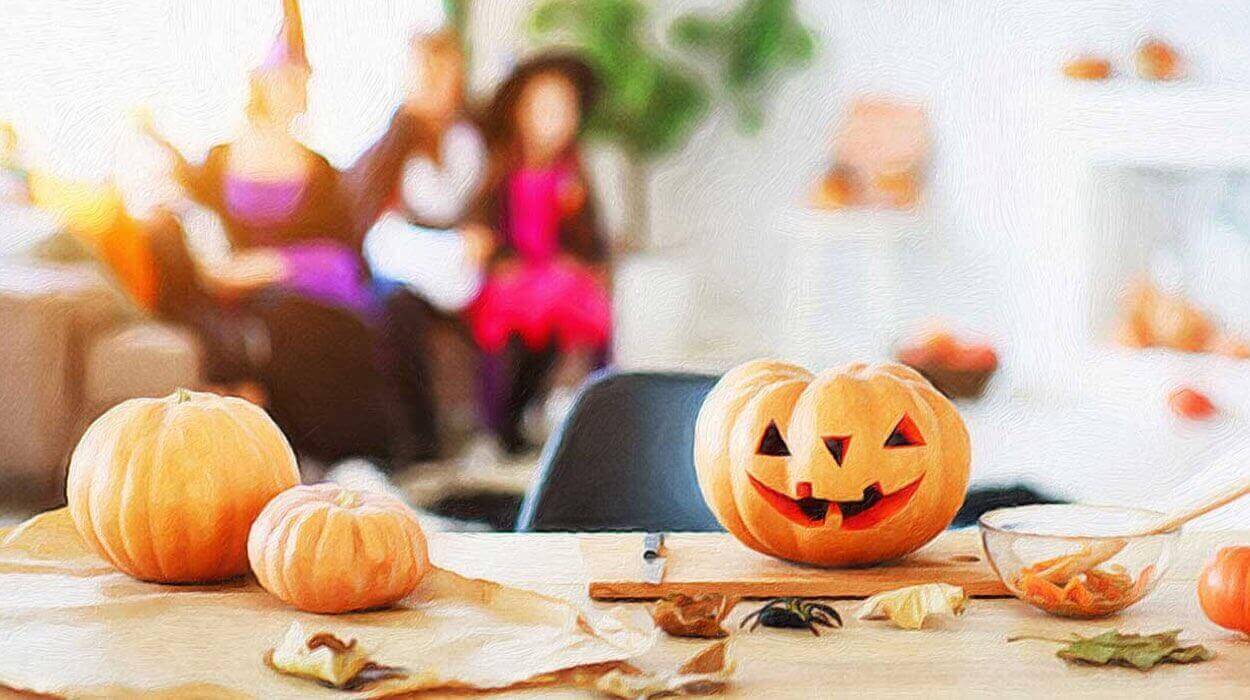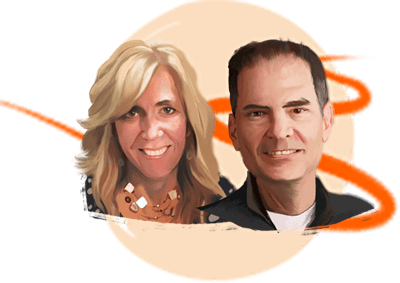Kimberly and Steven are devoted and loving parents to Leah and Justin. Being a parent is never easy, and being a parent of a child with Hunter syndrome has its own challenges. Kimberly and Steven’s son Justin was diagnosed at 3 years old. His Hunter syndrome symptoms included some cognitive delay. During his early childhood, that wasn’t a problem with his peers. But as elementary school progressed, his parents saw a wave of rejection starting to grow. Kids began to find their social circles through sports and other interests, and playdates became trickier as Justin’s behavior became harder to predict and control.
There was a girl on our street playing with the other neighborhood kids, and when she’d see Justin coming around, she’d start saying, ‘Justin alert! Justin alert!’ Because they knew he could be a handful sometimes.
And Justin wasn’t the only one people didn’t want to be with. Steven and Kimberly faced rejection by other parents.
“There was another family we knew. Justin and the boy were friends, and we and the parents were friends. But once they started to see that Justin had some category of special needs, they didn’t want their son hanging out with Justin anymore. They basically just cut all ties with us. That’s just one. There were a lot of difficult moments, hard moments for us.”
But Steven and Kimberly were not diminished by difficult moments, and they are not the type of parents to let challenging moments define their son’s childhood. “Did I cry? Yes, for my son. For myself,” admits Kimberly. “But we sort of regrouped and said, hey, you know what, there are people that are willing to embrace him. Let’s seek those people out.”
They got an idea of how to find those people at Sunday Mass. Their priest, in a completely different context, made a joke: “The way to make new friends is to be the one with the biggest-screen TV at kick-off time.” It was a silly joke, but they took its message to heart. It inspired them to change their family’s relationship with the community.

Building community in the backyard
Steven and Kimberly decided to throw a Halloween party for the neighborhood. Their idea was to use a big, fun neighborhood event as a way to integrate Justin into people’s lives, to create a fun space for them to get to know him.
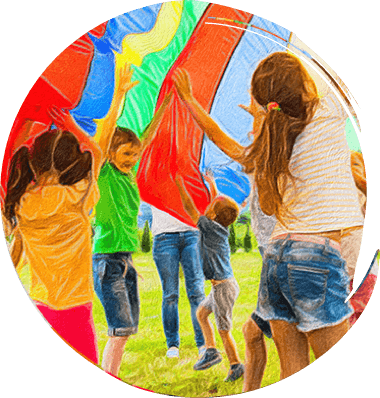
What we’ve learned over the years is that kids like Justin are more accepted when you grow up with them. That’s because you know them as a person, not as their condition. So these kids would see that he’s different, yes, he might have hearing aids, yes, but it kind of won’t matter because they’ll have grown up with him and they’ll have accepted him and encourage others to do the same.
The Halloween party was so successful that they then held a Christmas party, and then an Easter egg hunt, and then end-of-school-year celebrations, block parties, and summer movie nights. Soon they were a fixture on the town’s social calendar.
“It just kept growing and growing. Sometimes, the acceptance you’d expect to find in your own family, friends, and neighbors may not be there. But you have to be open to seeking things out, you have to be open to other types of people that will be willing to forge a relationship.”
And through it all, Justin was beaming, relishing his role as host. He looked forward to these events so much that he sometimes started setting up a week in advance.
He loved setting up the tents and the decorations, and then getting to play the games, and have all these people coming to his house. He would get so excited. It was just precious to watch.
Year after year, holiday after holiday, the momentum grew and so did the complexity of the events. They added a raffle to the Easter egg hunt and a hayride to the Halloween party. The Christmas party grew so large that they moved it out of their house to the high school cafeteria. Kimberly added an extra layer of purpose to the events by encouraging guests to bring donations for food pantries or personal hygiene products for the local shelter.
And all the good they were putting out into the community found its way back to them.
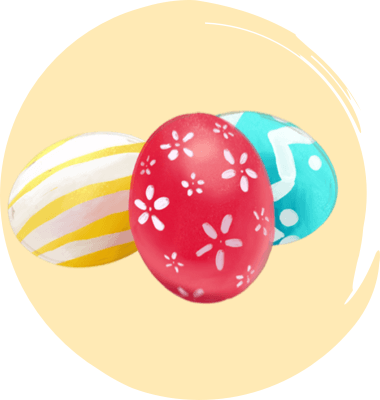
A lot of people look at all this and say, ‘Oh, that must cost a lot of money.’ But it really didn’t. Most of it was donations. The community would bring things, we borrowed people’s tents, neighbors helped stuff the plastic eggs. For us it was really more time than money.
“Not only did donations come pouring in from the guests at the events, donations came from local businesses for putting on the events—bagels, pizzas, snacks, drinks, candy, decorations, raffle prizes like gift certificates for restaurants, ice cream, and massages. Fog machines!
“98% of people that I reached out to—small businesses, big businesses, chains—wanted to contribute. That generosity just makes you feel good. It kind of restores your faith in your local community.”
Then one autumn, after 10 years of Halloween parties, Kimberly injured her foot and was out of commission with surgery during the weeks of preparation for the event.
“We’re thinking we’re going to have to cancel. All of a sudden, the whole football team shows up on the doorstep and says, ‘We’re going to help you.’ And all these other people, kids and organizations from the high school came too, and they set up the whole haunted house.
That was the pinnacle—everybody was just there to help and lend a hand and be together. We’d spent 10 years doing this, and between Justin and the community we were really seeing the fruits of the labor.

Bobbing and weaving
It wasn’t always easy getting to that point. Though each event ended in success, each new event began with questions like, ‘Do we do it?’ Their hesitation came from the amount of work that each event required, and because they also had to keep in mind that Justin and his classmates were entering their teens. And with the teenage years comes a big shift in interests.
“We knew most high school kids are not going to be interested in spending a Friday night hanging out with special needs families. As time went on, we just tried to bob and weave and figure out what could appeal to the different age groups.
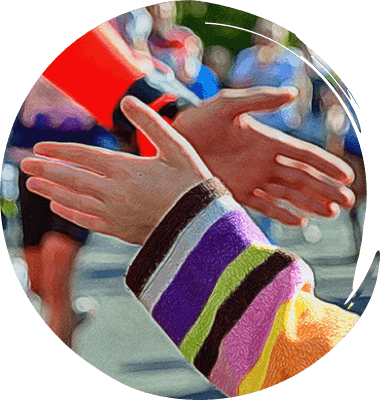
And every year we try to say, ‘OK, this group of kids isn’t interested anymore, so let’s open it up to this other group of kids, or that other part of the community.’ If something stopped working, we’d go in another direction because he still loved doing it and connecting with the people in his community.
So they reached out to different groups, clubs, neighborhoods, and programs that Justin and his younger sister Leah were a part of. And though their events were always big crowd pleasers, the point was never the size of the crowd.
“Though we did put it out to a lot of people, the point wasn’t to get as many people there for the heck of it. It was about the people that meant something to Justin, or he meant something to them. It was about the relationships. What was most important to us was that the people who were there really wanted to be there.”

The long game
The events had a lasting impact. Justin went to prom, and that same football team who set up for Halloween was there to cheer him on. Kimberly remembers, “Everyone on the team embraced him, and they said the highlight of their night was getting him onto the dance floor.”
But Steven and Kimberly also had a long-term goal beyond playdates and proms: positioning Justin to take his place in the community. That was one of the reasons they chose to keep him in a mainstream school rather than in a school for students with different conditions.
The people in most communities don’t have the chance to get to know a lot of the special needs children. When we looked down the road we said, ‘What is the ultimate goal for Justin?’ Well, he needs to have some type of meaningful employment in our community. In that case, the community needs to know him. So that was something that we were trying to accomplish.
The seasonal events were just one piece of that goal. An article in the local paper looked back 10 years at a story they had published when Justin was 8 years old. The story detailed how his passion for trains had led to the creation of a new just-for-kids section at the prestigious tri-state annual train show: “Kids Town, USA.”
“Justin always loved going to the train show—they have trains out on display but they don’t really want kids touching them. So when Justin was eight, I asked the organizer to let him create a hands-on experience, putting out all his toy trains and letting kids actually come and play with the trains. It started as a little tiny corner in a closet area, and became a much bigger experience.”
Ten years later and his “Kids Town, USA” has grown into one of the train show’s main attractions. Justin hosts and uses the opportunity to give back to the community by collecting donations to help the homeless.

Journey of a lifetime
Eventually, participating organizations took on some of the hosting, organizing, and set-up work for the events. This lifted a large weight from Kimberly’s shoulders.
Long before the big-screen TV moment, Steven and Kimberly had another, very different type of conversation with their priest. It was just after they’d gotten Justin’s diagnosis and just after their daughter Leah was born. They were overwhelmed with what the future might demand.
“Our priest said, ‘Someday you’ll look back on this and you’ll say, look how far we’ve come.’ And at that time, it was difficult to really grasp that. It’s just so daunting when you get the diagnosis.

But what he said did give us some hope, sort of helped us see it as ‘There’s a journey here that we need to take and someday we’ll be looking back on the journey, on our journey, and feel proud.’ It hasn’t been easy, and it’s still not easy. But, you know, we’ve hit that moment. I think we both can honestly say he was right. He was right.

5 ways Kimberly and Steven build a community of support
Reach out on social media
Private patient/caregiver groups can be great places to make friends, ask questions, and share experiences.
Reach out to organizations
Patient advocacy groups can be very effective ways to connect with like-minded people working to improve issues that impact you.
Reach out to others walking in your shoes
Ask your healthcare provider’s office or social worker to connect you with families living with similar conditions in your area.
Reach out to your community
Hosting neighborhood events or joining school organizations are great ways to build connections with the people around you.
Reach out to the people you love and trust
Oftentimes, people may not understand the sort of support or connection you need. Tell them. Explain what you need, why it’s important to you, and how they can show up for you.
Tagged in: Community & relationships, Parenthood, Problem solving, Caregiver
